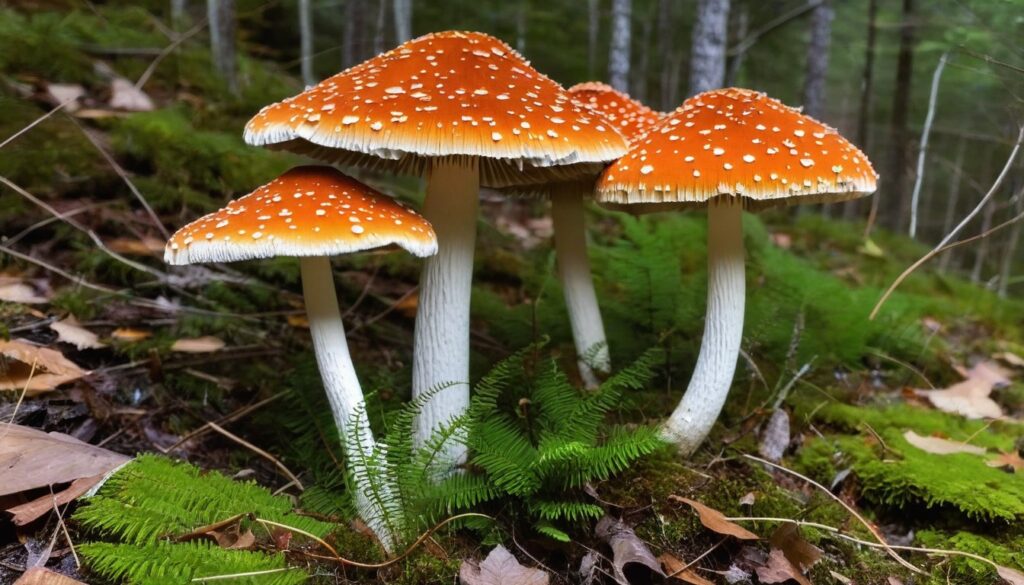Are you an outdoor enthusiast who loves mushroom hunting? If yes, then you must be aware of the serious health risks associated with consuming poisonous mushrooms found in Louisiana. Awareness and education are crucial in avoiding unfortunate circumstances.
In this guide, we will provide you with essential information on how to identify and avoid poisonous mushrooms in Louisiana. Our expert tips will help ensure your safety while enjoying the outdoors and prevent any potential risks associated with toxic mushrooms.
Key Takeaways:
- Knowing how to identify poisonous mushrooms is essential to avoid risks of toxicity.
- Familiarize yourself with common poisonous mushroom types found in Louisiana.
- Prevent mushroom poisoning by following safe mushroom hunting practices and precautionary steps.
- Learn essential first aid procedures in case of mushroom poisoning.
- Do not consume any mushrooms without proper identification and consultation with an expert.
Common Types of Poisonous Mushrooms
When it comes to mushroom hunting in Louisiana, it’s crucial to be able to identify the different types of poisonous mushrooms. Let’s take a closer look at some of the most common varieties you might encounter, along with their distinct features.
Mushroom Type | Distinct Features |
|---|---|
Amanita phalloides | This mushroom has a greenish-gray cap, white gills, a white stem, and a bulbous base. |
Amanita ocreata | This mushroom has a white cap, white gills, a white stem, and a membranous ring at the top of its stem. |
Galerina marginata | This mushroom has a brown cap, brown gills, and a stem that is yellowish at the top and reddish-brown at the base. |
Conocybe filaris | This mushroom has a brown cap and stem, and its gills are pale brown to grayish. |
Cortinarius rubellus | This mushroom has a red or reddish-brown cap, and its stem has a reddish tint. |
While these are just a few of the many poisonous mushrooms found in Louisiana, it’s crucial to be aware of their distinct characteristics to ensure your safety while out foraging. Remember, when in doubt, it’s always better to err on the side of caution and avoid consuming any mushroom you’re unsure of.
Toxic Effects of Poisonous Mushrooms
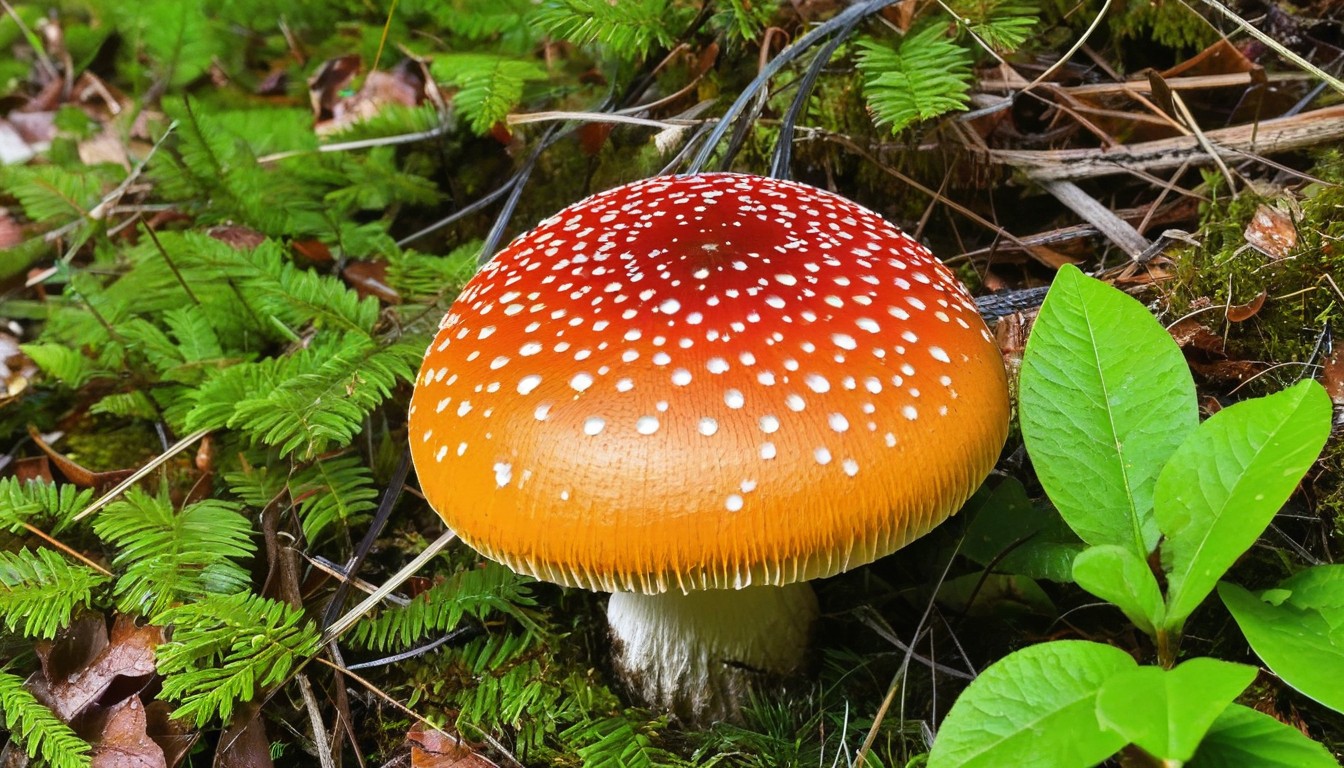
It’s crucial to understand the potential toxic effects of consuming poisonous mushrooms. These fungi contain various toxins that can harm your health and in some cases, cause irreversible damage. Some of the most common symptoms and complications of mushroom consumption include:
Toxic Effects | Symptoms |
|---|---|
Amanitin poisoning | Abdominal pain, vomiting, diarrhea, and dehydration. These symptoms tend to develop within 6-24 hours after ingestion. |
Gyromitrin poisoning | Abdominal pain, vomiting, diarrhea, and dizziness. These symptoms can appear within 6-12 hours after ingestion and could be fatal if left untreated. |
Coprine poisoning | Facial flushing, headache, palpitations, and sometimes hypotension. These symptoms can occur if you consume alcohol simultaneously with mushrooms containing coprine toxins. |
It is essential to seek medical attention immediately if you experience any of these symptoms after eating mushrooms. Delaying treatment could result in severe complications and, in severe cases, death.
Signs and Symptoms of Mushroom Poisoning
It is crucial to be aware of the signs of mushroom poisoning to seek immediate medical attention and receive appropriate treatment. Symptoms can vary, and some may not appear for several hours, making it essential to monitor your health closely after consuming mushrooms.
Types of Symptoms | Specific Symptoms |
|---|---|
Gastrointestinal Symptoms | Abdominal pain, vomiting, nausea, diarrhea |
Neurological Symptoms | Confusion, dizziness, hallucinations, insomnia, seizures |
Cardiovascular Symptoms | Chest pain, irregular heartbeat, low blood pressure |
Other Symptoms | Fever, chills, sweating, dehydration, liver and kidney failure |
If you experience any of these symptoms after consuming mushrooms, seek medical attention immediately and bring a sample of the mushroom for identification. Symptoms of mushroom poisoning can be severe and even life-threatening, so always err on the side of caution and seek professional help.
Safe Mushroom Hunting Practices
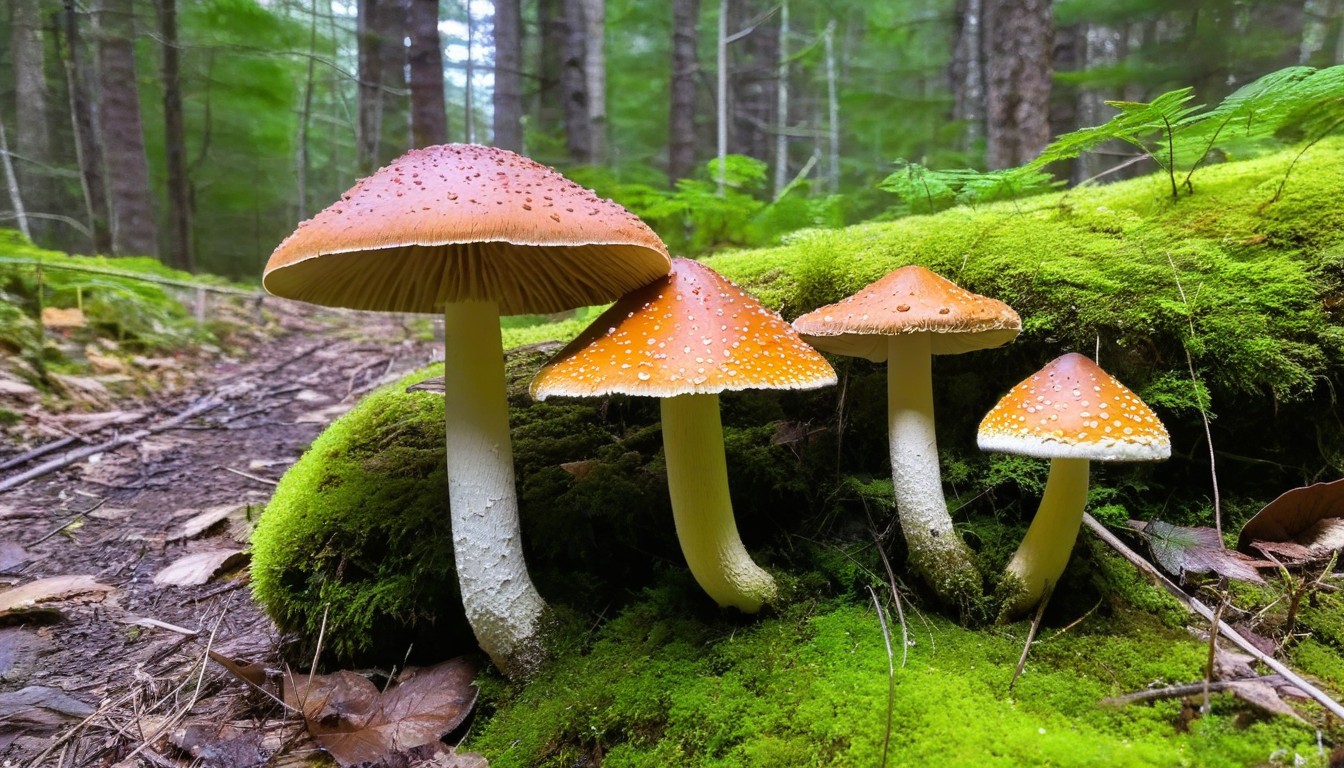
When hunting for mushrooms in Louisiana, it is essential to prioritize your safety by following these guidelines:
- Research: Educate yourself about the different types of mushrooms found in Louisiana, including their toxic counterparts. Familiarize yourself with their visual characteristics and habitat.
- Certification: Take a mushroom identification course or join a local mycological society. Certification can enhance your ability to correctly identify edible mushrooms.
- Mushroom location: Avoid harvesting mushrooms near highways, industrial sites, or areas that may have been treated with pesticides.
- Equipment: Use a mushroom knife or scissors, as these are designed to cut cleanly and prevent damage to the mycelium. Carry a basket or mesh bag to allow spores to fall back into the ground, aiding in the spread of the fungi.
- Storage: Store your harvested mushrooms in a breathable container in a cool, dry place. Avoid storing them in plastic bags as they may retain moisture and promote growth of harmful bacteria.
- Cooking: Cook your mushrooms thoroughly before consuming them. By doing so, you can eliminate toxic compounds and pathogens.
Poisonous vs. Edible Mushrooms
Mushroom Type | Poisonous | Edible |
|---|---|---|
Death Cap | Amanitin poisoning can cause liver and kidney failure, requires medical attention. | No |
Jack O’Lantern | Severe vomiting, cramps, and diarrhea. | No |
Honey Mushroom | Gastrointestinal distress due to presence of a mild toxin. | Yes (cooked) |
Morel | No | Yes (cooked) |
Chanterelle | No | Yes (cooked) |
By following these safe practices, you can minimize the chance of accidentally consuming a toxic mushroom and ensure a safe and enjoyable foraging experience.
Poisonous Mushroom Look-Alikes
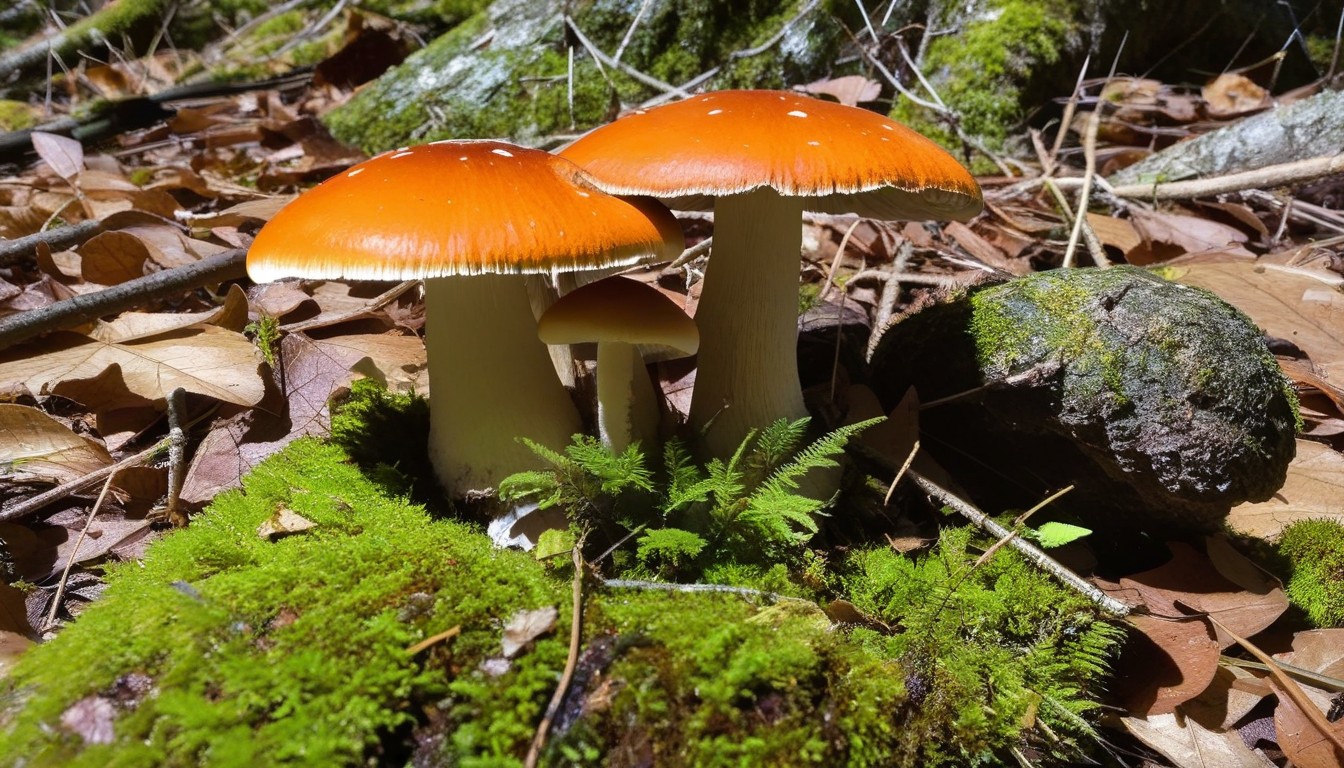
It’s crucial to differentiate between poisonous mushrooms and their harmless look-alike counterparts when foraging for fungi. While some toxic species may have unique identification features, others can closely resemble edible varieties, making it challenging to distinguish between them. Here are some essential tips to help you identify the key differences:
Poisonous Mushrooms | Look-Alikes |
|---|---|
Death Cap Smooth cap, greenish-yellow, pearly white gills, and a bulbous stem. Highly toxic and can lead to severe liver damage. | Paddy Straw Mushroom Similar-looking but with brownish gills and a slender stem. Edible and commonly used in Asian cuisine. |
Jeweled Death Cap Yellow-green cap, striated with greenish-brown scales, and white gills that develop a pinkish tint. Lethal when ingested. | Coccora Mushroom Its cap has a brownish-black shade, and it has a smooth stem. Edible and commonly consumed in some parts of Mexico. |
False Morel Convex and wrinkled cap, with a brain-like shape. Typically red, brown, or yellow. Contains a toxin that attacks the liver and kidneys. | Its cap is honeycombed and has a unique cone shape. Light brown or yellowish. Edible and highly prized by mushroom hunters. |
Remember to examine the cap shape, gills, spores, stem, and overall appearance and compare them to reference images to avoid any confusion. Do not rely on the smell or taste to differentiate between toxic and non-toxic mushrooms, as some can be misleading and potentially dangerous. It’s always better to err on the side of caution.
Tips for Correct Mushroom Identification
Identifying mushrooms can be challenging, especially for beginners. However, with these expert tips, you can confidently differentiate between edible, non-edible, and poisonous mushrooms:
- Take note of the habitat: Different mushroom species have distinct preferences on the type of environment they thrive in. Pay attention to the location, such as the type of trees, soil, and climate. This detail may help you to narrow down the possibilities.
- Observe the cap: The cap is the topmost part of the mushroom, which differs in shape, color, and texture among the various species. Notice if it’s convex or flat, smooth or textured, moist or dry, and check the color – each detail may be critical in identification.
- Check the gills: Mushrooms have thin plates or gills beneath the cap, where the spores are produced. These gills can be a useful identification tool – check the color, shape, and spacing so you can differentiate between different types.
- Examine the stem: Look at the size, color, texture, and shape of the stem. The size and shape of the stem can be crucial in identifying mushrooms. Some poisonous species, such as the Death Cap, have a bulbous base, while others may have a spindly, slender stem.
- Do a spore print: Creating a spore print is a common method of identification. Place the mushroom cap gill-side down on paper and leave it for a few hours. The spores’ color and pattern produced on the paper can help you to identify a specific species.
By following these tips for mushroom identification, you can safely differentiate between the different types of mushrooms and choose which ones are suitable for consumption.
Prevention and Safety Measures
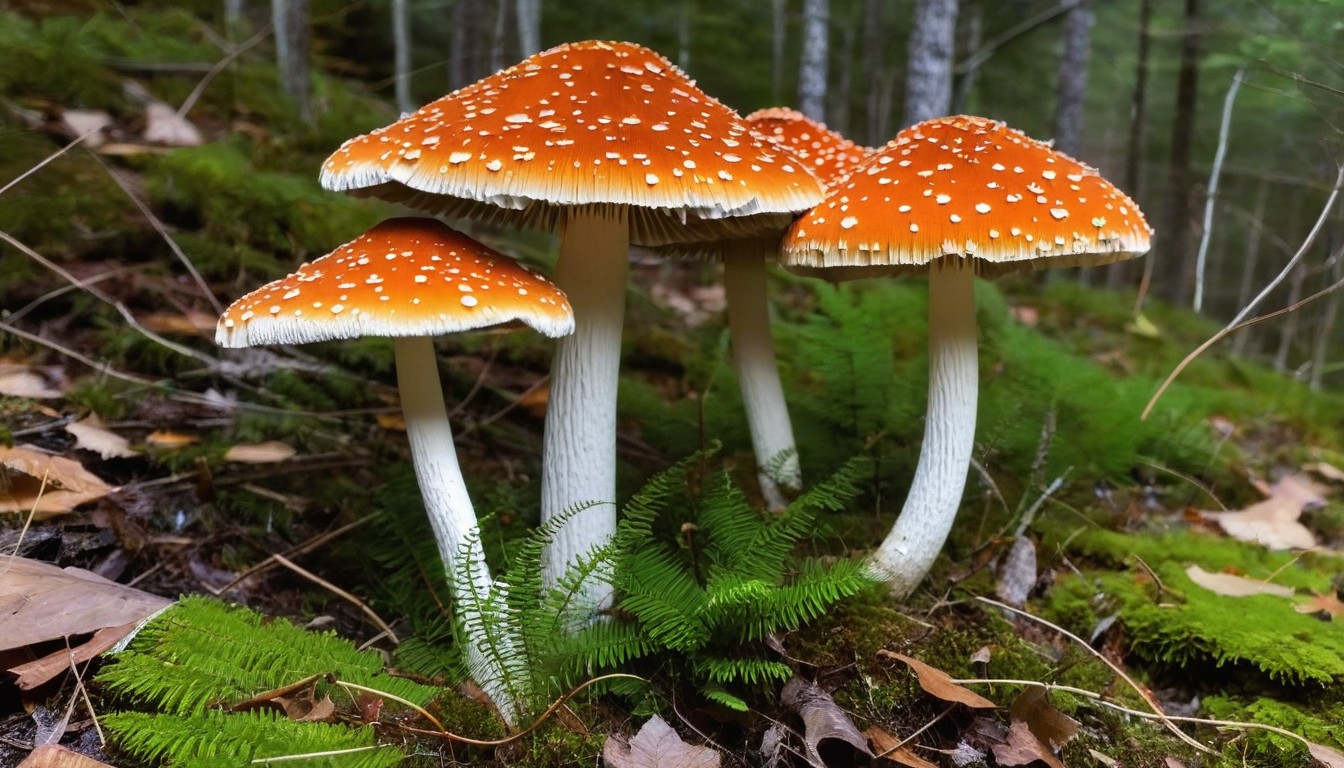
Preventing mushroom poisoning is key to enjoying a safe hunting experience in Louisiana. By adopting safety measures, you can minimize the risk of accidentally consuming toxic mushrooms. Follow these tips to ensure your safety:
- Always go mushroom hunting with an experienced forager. This will help you identify mushrooms accurately and avoid any harmful varieties.
- Do not consume mushrooms unless you are 100% certain of their identification. Remember, when in doubt, throw it out!
- Wear gloves when foraging. This will prevent any harmful toxins from entering through your skin.
- Carry your mushrooms in a breathable container. Avoid using plastic bags as they can cause mushrooms to spoil quickly.
- Do not consume wild mushrooms raw. Always cook them thoroughly, as heat can break down the toxins and make them safe to eat.
Clean Your Harvest Correctly
Cleaning your harvest the right way is crucial in preventing mushroom poisoning. Follow these simple steps:
“Always clean your mushrooms with a soft-bristled brush or a damp paper towel. Never use water to rinse them as they can absorb it and become slimy.”
Know Your Poisonous Mushrooms
It is essential to learn about poisonous mushrooms to ensure your safety. Here is a quick list of those commonly found in Louisiana:
Identification Characteristics | |
|---|---|
Death Cap | White or yellowish cap, greenish stalk, and a distinct ring on the stem near the top. Has a pleasant almond-like odor and taste. |
Galerina marginata | A small and slender mushroom with a conical cap. Its gills are rusty red, and the stalk is thin and fragile. |
Amanita muscaria | A brightly colored mushroom with a red cap covered in white scales. It has white gills and a white stalk that often has a ring. |
Be aware of their distinct characteristics, and avoid consuming them at all costs.
By implementing these prevention and safety measures, you can enjoy a safe and stress-free mushroom hunting experience in Louisiana. Stay alert, educate yourself and your companions, and always prioritize your well-being. Happy hunting!
First Aid for Mushroom Poisoning
If you suspect mushroom poisoning, time is of the essence. Seek immediate medical attention and try to provide as much information about the type of mushroom ingested or any visible symptoms. Until medical help arrives, take the following first aid steps:
- Induce vomiting: If the ingestion occurred within the last hour, induce vomiting by drinking a mixture of one tablespoon of ipecac syrup and one cup of water. Never induce vomiting if the affected person is unconscious or experiencing convulsions.
- Provide activated charcoal: Administer activated charcoal to help absorb the toxins in the stomach and prevent their absorption into the bloodstream. The recommended dose is one gram of charcoal per kilogram of body weight.
- Stay hydrated: Encourage the affected person to drink plenty of fluids, such as water or clear fluids, to help flush the toxins out of their system.
- Monitor symptoms: Look for any signs of worsening or new symptoms, such as difficulty breathing, seizures, or loss of consciousness, and be prepared to provide CPR if needed.
- Do not: Do not give anything by mouth, including food or medications, unless advised by a medical professional. Do not consume dairy or alcohol, as they can increase the absorption of toxins.
Remember that prompt and appropriate first aid measures can make a significant difference in minimizing the effects of mushroom poisoning. Stay calm, seek medical attention, and follow the advice of healthcare professionals.
Conclusion
Now that you have read our safe guide to poisonous mushrooms in Louisiana, you can confidently explore the outdoors without worrying about potential risks. Remember to familiarize yourself with the different types of poisonous mushrooms and their look-alikes, follow safe mushroom hunting practices, and prioritize your well-being by adopting precautionary measures.
By doing so, you can enjoy the beauty of nature while staying safe. Always remember that prevention is key, and early recognition of the signs and symptoms of mushroom poisoning can make a significant difference in minimizing its effects.
We hope that this safety guide has equipped you with the necessary knowledge and skills to identify and avoid poisonous mushrooms in Louisiana. Happy hunting, and stay safe!
FAQ
How can I identify poisonous mushrooms in Louisiana?
There are several key characteristics to look for when identifying poisonous mushrooms in Louisiana. These include distinct color patterns, unusual shapes, and specific features such as gills or spore prints. Additionally, it is crucial to consult reputable field guides or seek guidance from experienced mushroom hunters to ensure accurate identification.
What are the common types of poisonous mushrooms in Louisiana?
Louisiana is home to several species of poisonous mushrooms, including the Death Cap (Amanita phalloides), Destroying Angel (Amanita bisporigera), and Jack O’Lantern (Omphalotus olearius), among others. It is essential to familiarize yourself with these species and their distinguishing characteristics to avoid potential risks.
What are the toxic effects of consuming poisonous mushrooms?
Consuming poisonous mushrooms can lead to various toxic effects, ranging from mild gastrointestinal discomfort to severe organ failure. Symptoms may include nausea, vomiting, abdominal pain, diarrhea, dizziness, liver or kidney damage, and in extreme cases, respiratory distress or death. It is crucial to seek immediate medical attention if you suspect mushroom poisoning.
What are the signs and symptoms of mushroom poisoning?
The signs and symptoms of mushroom poisoning can vary depending on the specific toxins present in the mushrooms. Common indicators include gastrointestinal distress, such as nausea, vomiting, and diarrhea, as well as abdominal pain, hallucinations, sweating, increased heart rate, and difficulty breathing. If you experience any of these symptoms after consuming mushrooms, it is essential to seek medical help immediately.
What safety measures should I follow while mushroom hunting in Louisiana?
When mushroom hunting in Louisiana, it is vital to adhere to safe practices. These include only foraging in areas where you have obtained permission, wearing protective gloves and clothing, using a mushroom knife to avoid damaging the fungi, and carrying a reliable field guide or consulting an experienced mycologist for identification assistance. Additionally, never consume a mushroom unless you are certain of its edibility.
Can dangerous mushrooms resemble harmless varieties?
Yes, there are poisonous mushrooms that have harmless look-alikes, making accurate identification challenging. For example, the edible Chanterelle mushroom may resemble the poisonous Jack O’Lantern mushroom. It is crucial to pay close attention to distinguishing features such as color, shape, odor, and the presence of gills or spores.
What are some tips for correctly identifying mushrooms?
To correctly identify mushrooms, it is beneficial to follow these tips: thoroughly examine the cap, stem, gills, and spore characteristics; take note of the habitat and surroundings where the mushroom is found; consult reputable field guides or online resources for visual references and descriptions; and when in doubt, reach out to local mushroom clubs or experts for guidance.
How can I prevent mushroom poisoning?
To prevent mushroom poisoning, it is crucial to follow safety measures such as only consuming mushrooms that have been accurately identified as edible, avoiding areas with high pollution or chemical usage, thoroughly cooking mushrooms before consumption, properly storing and preserving harvested mushrooms, and educating yourself about the specific toxic species found in your area.
What should I do in case of mushroom poisoning?
If you suspect mushroom poisoning, it is important to seek immediate medical help. While waiting for assistance, do not induce vomiting or consume any food or drink unless directed by a medical professional. Try to preserve a sample of the mushroom for identification purposes if possible. Quick medical intervention can significantly improve the outcome in cases of mushroom poisoning.
How can I stay safe while mushroom hunting in Louisiana?
By being informed, following safe practices, and utilizing proper identification techniques, you can ensure your safety while mushroom hunting in Louisiana. Remember to always prioritize caution, consult reliable sources, and educate yourself about the local toxic mushrooms. With adequate knowledge and precautions, you can have a rewarding and safe mushroom hunting experience in Louisiana.

